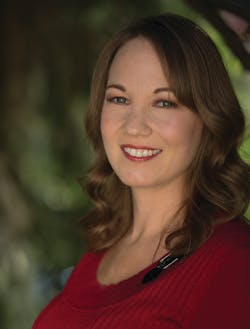Developing California's High-Speed Rail
People looking to bring high-speed rail to the United States are meeting in Los Angeles, Calif., this week for the US High Speed Rail Association’s High Speed Rail Conference: Bringing High-Speed Rail to America. USHSR President & CEO Andy Kunz began the conference pointing out the five challenges facing HSR in America:
- Confusion to the public about what high-speed rail is, is it Amtrak, how fast is it?
- There’s a well-funded negative campaign out there by those industries that don’t want this to move forward
- There’s a lack of dedicated funding sources
- Benefits are not clearly articulated or consistent
- There are long lead times to seeing results so a lot of people lose interest during that time
Over the next few days, experts from across the country and from around the world look to answer those questions and share examples of what is being done here and elsewhere to meet those challenges.
Kunz shared a few of the things USHSR has been involved in to meet the need for a national public relations campaign. They’ve been working on developing a TV series about HSR from around the world and they’re currently in talks with the Discovery Channel and they started a sweepstakes to help fund the series. In the United Kingdom there was a very successful “Yes for HSR” campaign and they are talking to the people there to utilize some of their successful strategies.
California Assemblymember Fiona Ma talked about her efforts in keeping the HSR initiative on the ballot. In 2007 she was in France on a HSR delegation trip and was on the record-breaking train that traveled at 357 miles per hour. “It scared the death out of me,” she said with a laugh. “I got off the train and the media approached me and they asked, ‘Are you going to have high-speed trains?’ and I said, ‘Yes, we’re going to do it.’”
While Proposition 2, the chicken initiative, was able to raise $12 million, she said they were barely able to raise one million. She explained they printed their own literature and went to all of the college campuses along the proposed route and with the help of the California Public Interest Research Group (CALPIRG), they spread the word and during the worst recession, passed the initiative by 53 percent.
“Because the people voted for it, that is why it is still a priority today.” She added, “We cannot let the opponents continue to attack this very important project. California voters know; they voted for it, they want it.”
The delay in HSR being accomplished in the United States is from a lack of leadership, said Mineta Transportation Institute Executive Director Rod Diridon. While we could say it’s the auto industry or the petroleum industry that’s behind it, he said it’s the lack of courage and that no one stood up and said we need to build trains.
“People are choking on the congestion,” he said. We’re very close to the terminal gridlock that brought Beijing to a standstill where they had seven days of gridlock where nothing moved. After five or six hours, people can’t stay in their cars any longer, so they walk away. “When enough people do that, everything stops.” He added, “We’re very close to that in America.”
California has the ninth largest economy in the world and the Central Valley is bigger than 30 other states, said Jeff Morales, California High-Speed Rail Authority chief executive officer. With no rail connection between northern and southern California through the Central Valley, that is the authority’s highest priority going forward.
In the next month or two, CHSRA will be awarding some preliminary contracts within the next month or two and additional contracts and building underway by next summer.
The introductory comments provided an overview of where things are at for the country and state compared to other parts of the world and the rest of the day will be focusing in on some of the projects around the world and details about the work happening in California.
